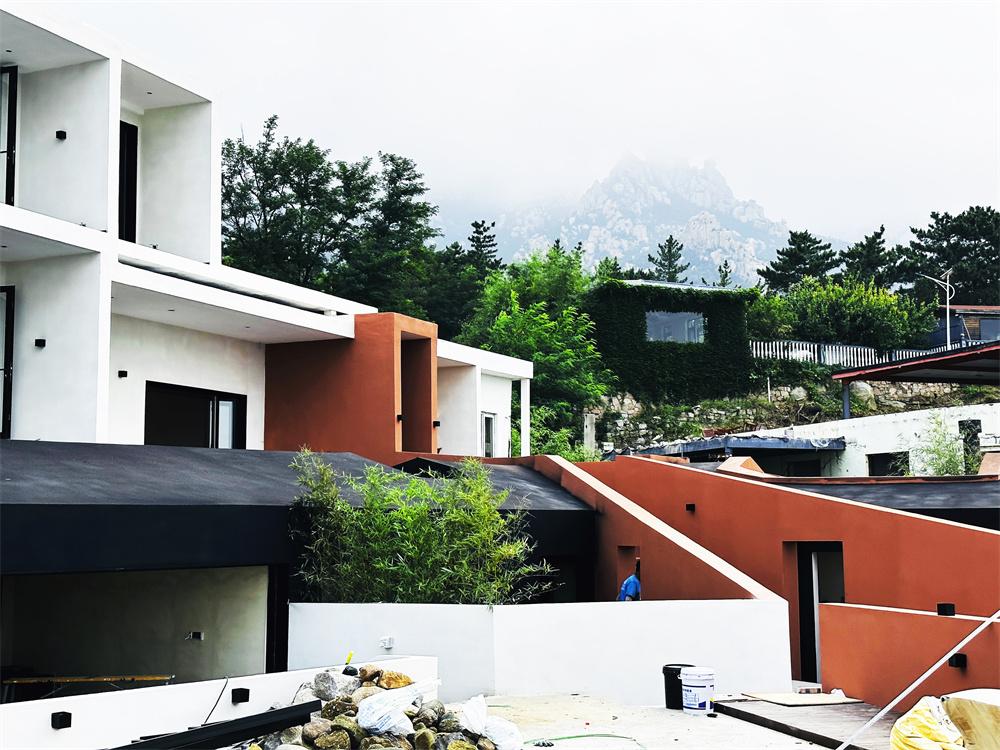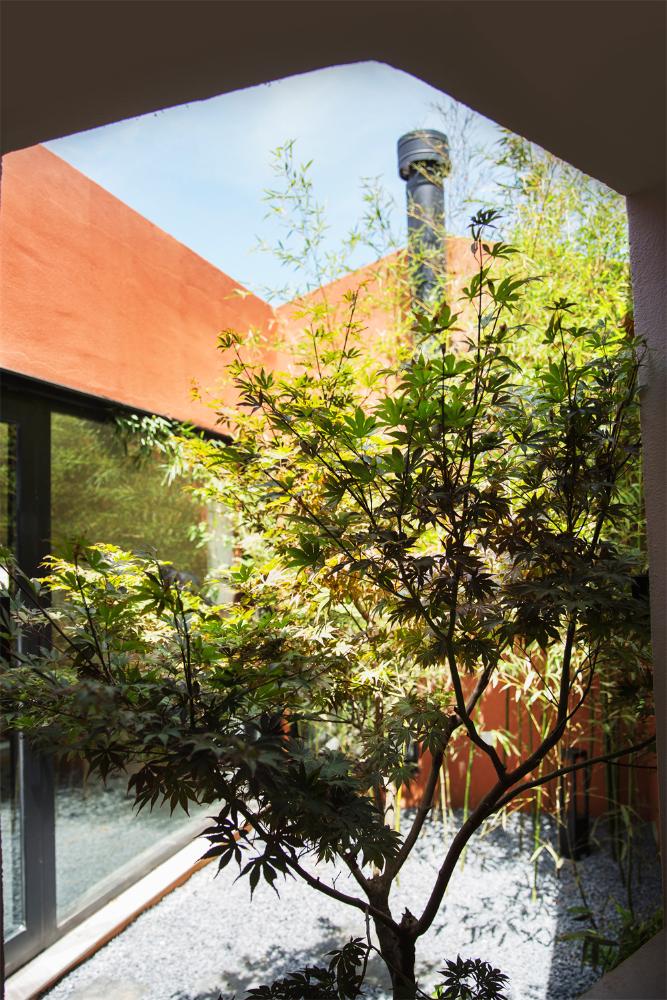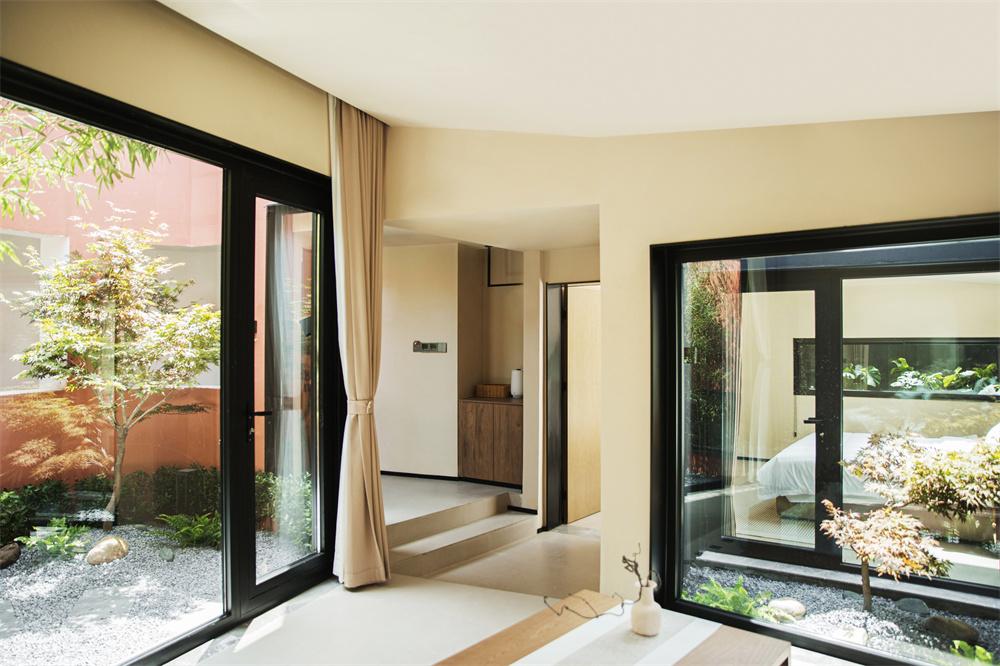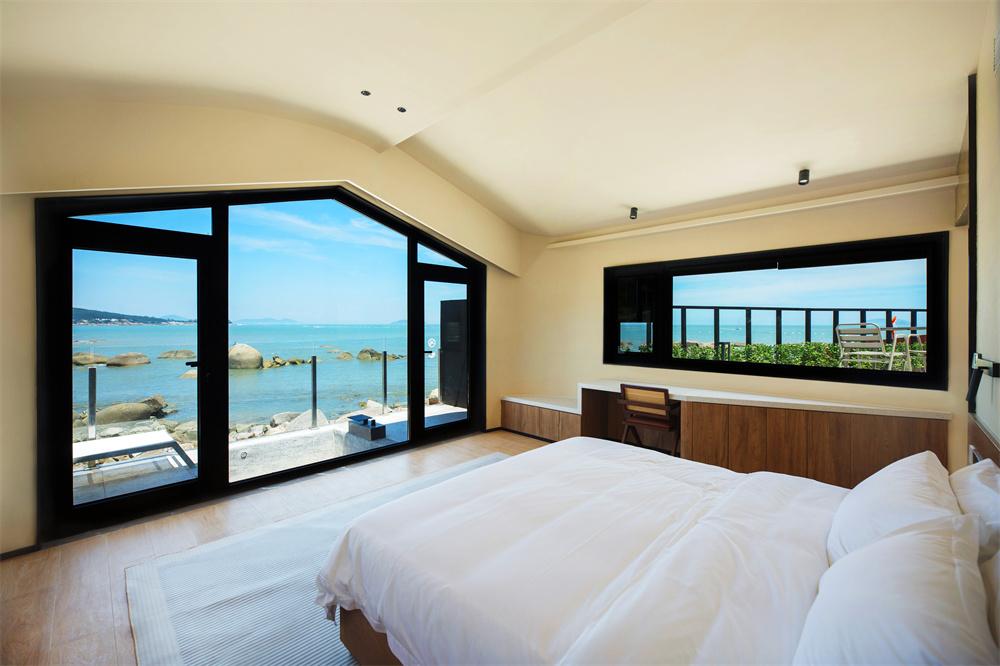Best of B&B Buildings
Designer / Agency
- Han Dequan
Category
- B&B Buildings
Award
- 2023 Innovation
Share this project
PROJECT
DESCRIPTION
Project:Qingdao“ Experience Nature view tide” homestay project design
Design by:S.G.T.design,Co.,Ltd,Beijing
Lead designer:Han Dequan
Main participating designers:Liu Wenyuan\Piao Shiyu\Wang Jingjing
project area: :1463.37m2
Main materials:Reinforced concrete, lightweight bricks, steel, real stone paint, glass
Project location: Laoshan District, Qingdao City, Shandong Province
Completion date: August 2023
Photographers: Han Dequan, Wang Yi
Located in the Laoshan Scenic Area of Qingdao, this is a project based on the renovation of an existing building. The site has a unique sea view. The entire base is open to the sea, providing a maximized visual surface for viewing the sea; at the same time, the vertical elevation of the base shows a gradual decline on the sea-facing side, which also provides different heights for viewing the sea; in addition, the sea is on the north side of the base, which provides a permanent and bright sea for Qingdao, which is situated to the north of the Tropic of Cancer.
The most important objective of the design is to maximize the use of the sea view while organizing the interior space. One way is to provide a great sea view experience for people arriving at the site, and the other way is to still have enough possibilities to explore the interior.
First of all, based on the current building layout, this project changes the layout of the renovated building into a form that is open to the sea in order to maximize the use of sea view resources. At the same time, the original height difference of the base is further strengthened, and the building is designed as a compact and non-interfering three-story terrace form, in which each floor and each room has an excellent and differentiated sea view. Based on the original building conditions, the building space was re-divided to create various functional spaces with different spatial forms and different ways of viewing the sea. There are long spaces with longitudinal sea views, horizontal spaces that provide long horizontal sea views, and shaped spaces that provide novel sea experiences.
In addition, based on the current conditions of the site and the building, the indoor and outdoor spaces of the site are reorganized to make the internal space show different forms, step by step scenery, and colorful changes. The original straight corridors are transformed into green corridors; the original single flow line is transformed into a rich walking path full of scenery (not only sea view); the original side-by-side monotonous guest rooms are transformed into landscape rooms full of individuality with different ways of entry, different interior spaces and different views.
For the two houses near the sea, we carried out a large-scale in-situ renovation, transforming the original monotonous and dilapidated building into a space with excellent sea-side qualities, providing a never-before-seen experience of "waves lapping in front of your eyes".
For the taller building on the south side of the compound, we have also made major changes while retaining the original structure. The original room divisions on the first floor have been broken up and reorganized, and the corridors between the rooms have been redesigned - the planes zigzag and the introduction of skylight creates the quality of "winding paths", while at the same time keeping the entrances of the guest rooms private from each other.
In the landscape design, we transformed the original messy outdoor space to match the building space. The outdoor space on the south side of the building, i.e. on the third floor of the original building, has been turned into a private courtyard for guest rooms and a winding public walkway; the outdoor space facing the sea has been designed as a space for entertainment with public attributes and a private courtyard for guest rooms, and in between the two, we have designed a "trumpet" shaped ramp that can lead to the sponge directly. Guests can then walk directly into the sea. The outdoor space on the east side of the site was transformed into a dining out area connected to the roof of the restaurant, where people can get close to the sea while dining, or even walk up to the roof of the restaurant to experience the "view of the mountains".
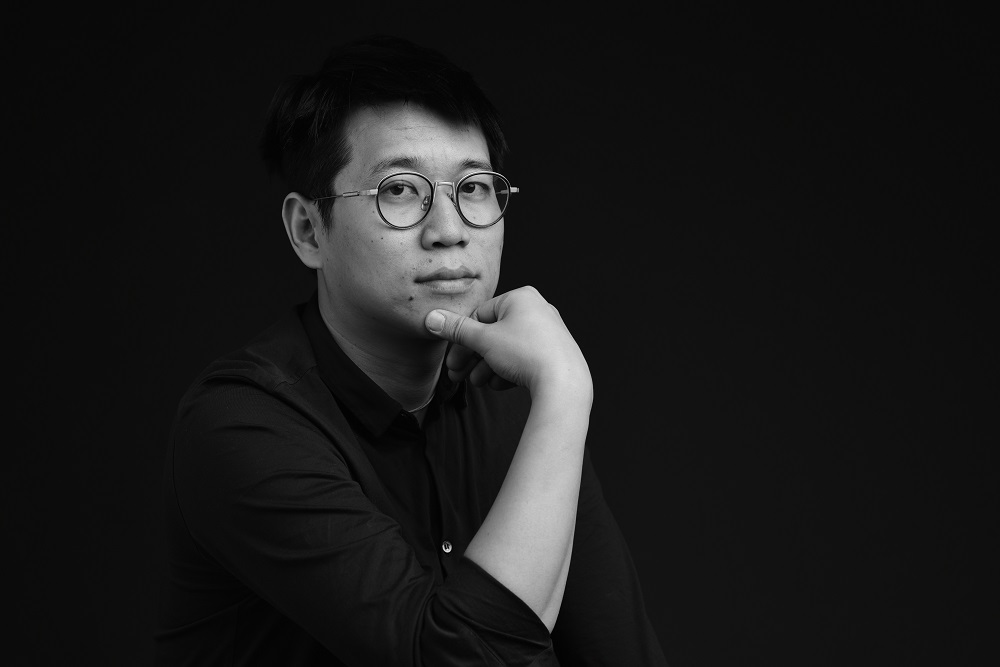
Designer:Han Dequan
Undergraduate course, School of Architecture, South China University of Technology.
Master of Architecture Research Center of Peking University.
Founder and presiding architect of Beijing Yishan Design Co., Ltd.
Architect of Party A of China Art Museum National Art Museum Project.
Auburn landscape architecture consultant, USA.
Expert Consultant of Intellectual Property Service Center of China TV Drama Production Association.
CEIDA member of China-Europe International Design Association.
Since he started his career in 2012, as the main or even the only person in charge, he has participated in and taken charge of nearly 100 kinds of design projects such as architecture, planning, landscape and interior, and has rich design experience. The design works have won many design awards in the industry and have been reported by authoritative media such as CCTV and Beijing Satellite TV.
The main research and practice directions are: cultural tourism projects, courtyard buildings, art museum buildings, and commercial space interiors.
In 2010, as the main person in charge, he participated in the investigation and research of ancient dwellings in Enshi, Hubei Province, and co-published Enshi Dwellings;
From 2012 to 2014, he participated in the research on "Art Museum Architecture" as the main person in charge, and the result "Art Museum Design Guide" was published;
In 2016, the "Fujian Tulou" research plan was launched to conduct in-depth and architecturally valuable investigation and research on tulou buildings in Nanjing and other places in Fujian, and the results were awarded by the "2016 Excellent Research Report on National Cultural System" selected by the Ministry of Culture of People's Republic of China (PRC), which was printed and published;
From 2013 to 2018, as the main drafter, he participated in the "Standards for the Construction of Public Art Museums" approved by the Ministry of Housing and Urban-Rural Development of People's Republic of China (PRC).


